
Copernical Team
Orbital Insertion Burn a Success, Webb Arrives at L2
 At 2 pm EST Monday, Webb fired its onboard thrusters for nearly five minutes (297 seconds) to complete the final postlaunch course correction to Webb's trajectory. This mid-course correction burn inserted Webb toward its final orbit around the second Sun-Earth Lagrange point, or L2, nearly 1 million miles away from the Earth.
The final mid-course burn added only about 3.6 miles per hour (1
At 2 pm EST Monday, Webb fired its onboard thrusters for nearly five minutes (297 seconds) to complete the final postlaunch course correction to Webb's trajectory. This mid-course correction burn inserted Webb toward its final orbit around the second Sun-Earth Lagrange point, or L2, nearly 1 million miles away from the Earth.
The final mid-course burn added only about 3.6 miles per hour (1 Looking Up at the Asteroids in the Neighborhood
 Asteroids fly through our solar system all the time, but it's rare for us to take notice of them. But that's changed this week, as an asteroid passes within 1,231,184 miles of Earth on January 18. The asteroid, dubbed 7482 (1994 PC1), was first seen in 1994 and is about two-thirds of a mile wide.
One likely reason Americans are paying more attention is because many millions have watched th
Asteroids fly through our solar system all the time, but it's rare for us to take notice of them. But that's changed this week, as an asteroid passes within 1,231,184 miles of Earth on January 18. The asteroid, dubbed 7482 (1994 PC1), was first seen in 1994 and is about two-thirds of a mile wide.
One likely reason Americans are paying more attention is because many millions have watched th How to Retain a Core
 Pasadena CA (JPL) Jan 25, 2022
Have you ever wondered how a coring bit grabs and holds onto a rock core?
As we drill, the bit teeth cut a 27mm diameter circle in the rock and leave the 13mm diameter center intact. As we dig deeper, that cylinder of rock is fed into the sample tube that was loaded inside the bit. When the drill reaches its target depth, typically 66mm, the core is fully in
Pasadena CA (JPL) Jan 25, 2022
Have you ever wondered how a coring bit grabs and holds onto a rock core?
As we drill, the bit teeth cut a 27mm diameter circle in the rock and leave the 13mm diameter center intact. As we dig deeper, that cylinder of rock is fed into the sample tube that was loaded inside the bit. When the drill reaches its target depth, typically 66mm, the core is fully in Chinese lunar rover's 2-year travelogue on moon's far side reported
 Chinese scientists published the country's lunar rover travelogue of its first two years of service that depicted the unique and untrodden moonscape on the moon's far side, revealing its notable differences with the near side with in situ evidence.
The study published on Thursday in the peer-reviewed journal, Science Robotics, described cloddy soil, gel-like rocks, and fresh small craters
Chinese scientists published the country's lunar rover travelogue of its first two years of service that depicted the unique and untrodden moonscape on the moon's far side, revealing its notable differences with the near side with in situ evidence.
The study published on Thursday in the peer-reviewed journal, Science Robotics, described cloddy soil, gel-like rocks, and fresh small craters Hope for present-day Martian groundwater dries up
 Liquid water previously detected under Mars' ice-covered south pole is probably just a dusty mirage, according to a new study of the red planet led by researchers at The University of Texas at Austin.
Scientists in 2018 had thought they were looking at liquid water when they saw bright radar reflections under the polar cap. However, the new study published Jan. 24 in the journal Geophysica
Liquid water previously detected under Mars' ice-covered south pole is probably just a dusty mirage, according to a new study of the red planet led by researchers at The University of Texas at Austin.
Scientists in 2018 had thought they were looking at liquid water when they saw bright radar reflections under the polar cap. However, the new study published Jan. 24 in the journal Geophysica Webb telescope reaches destination, 1 mn miles from Earth: NASA
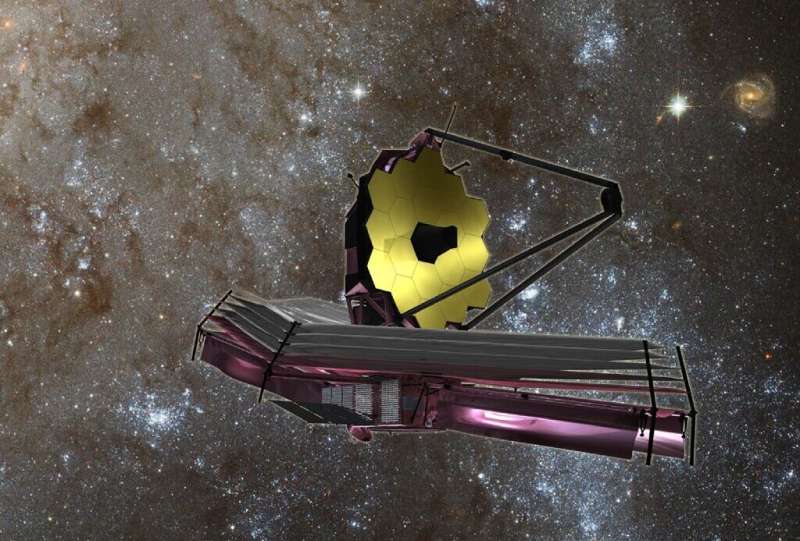
The James Webb Space Telescope has fired its thrusters and reached its orbital destination around a million miles (1.5 million kilometers) away from our planet, NASA said Monday, a key milestone on its mission to study cosmic history.
At around 2:00 pm Eastern Time (1900 GMT), the observatory fired its thrusters for five minutes in order to reach the so-called second Lagrange point, or L2, where it will have access to nearly half the sky at any given moment.
"Webb, welcome home!" said NASA Administrator Bill Nelson in a statement.
"We're one step closer to uncovering the mysteries of the universe. And I can't wait to see Webb's first new views of the universe this summer!"
Extraordinary black hole found in neighboring galaxy
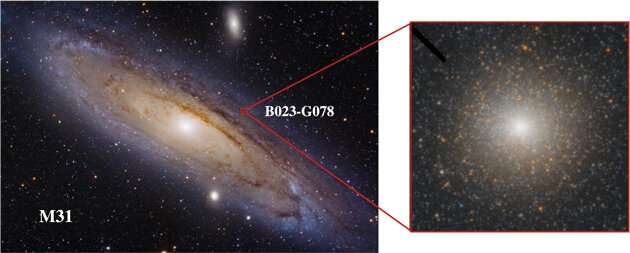
Astronomers have discovered a black hole unlike any other. At one hundred thousand solar masses, it is smaller than the black holes we have found at the centers of galaxies, but bigger than the black holes that are born when stars explode. This makes it one of the only confirmed intermediate-mass black holes, an object that has long been sought by astronomers.
"We have very good detections of the biggest, stellar-mass black holes up to 100 times the size of our sun, and supermassive black holes at the centers of galaxies that are millions of times the size of our sun, but there aren't any measurements of black between these.
Webb has arrived at L2
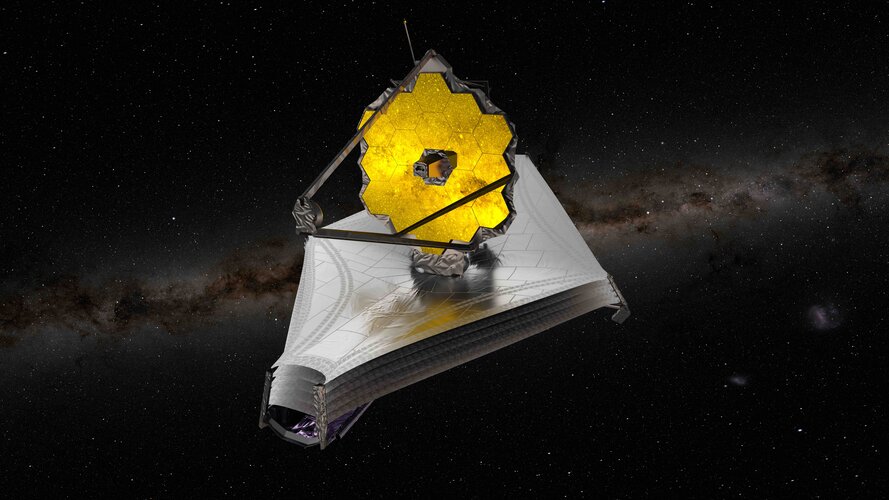
Today, at 20:00 CET, the James Webb Space Telescope fired its onboard thrusters for nearly five minutes (297 seconds) to complete the final post launch course correction to Webb’s trajectory. This mid-course correction burn inserted Webb toward its final orbit around the second Sun-Earth Lagrange point, or L2, nearly 1.5 million kilometres away from Earth.
Video: Webb flies Ariane 5: From preparation to liftoff at Europe's Spaceport
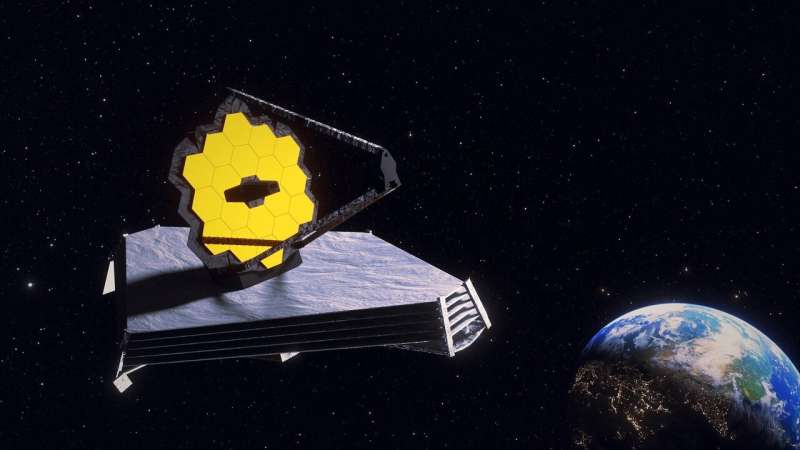
The James Webb Space Telescope lifted off on an Ariane 5 rocket from Europe's Spaceport in French Guiana, at 13:20 CET on 25 December 2021 on its exciting mission to unlock the secrets of the Universe.
This timelapse shows highlights of the launch campaign from the arrival of Webb in French Guiana through to liftoff.
Every launch requires meticulous planning and preparation. For Webb, this process began about 15 years ago. Webb arrived from California on board the MN Colibri which sailed the Panama Canal to Pariacabo harbor in French Guiana. The shallow Kourou river was specially dredged to ensure a clear passage and the vessel followed high tide to safely reach port on 12 October 2021.
Though the telescope weighs only six tons, it was more than 10.5 m high and almost 4.5 m wide when folded. At Europe's Spaceport it was unpacked inside a dedicated spacecraft preparation facility fitted with walls of air filters to protect the telescope from contamination during preparations for launch.
After its arrival in the final assembly building, Webb was lifted slowly about 40 m high and then carefully maneuvered on top of Ariane 5—one of the most delicate operations during the entire launch campaign.
Even after James Webb Space Telescope launch, astronomers still on the edge of their seats
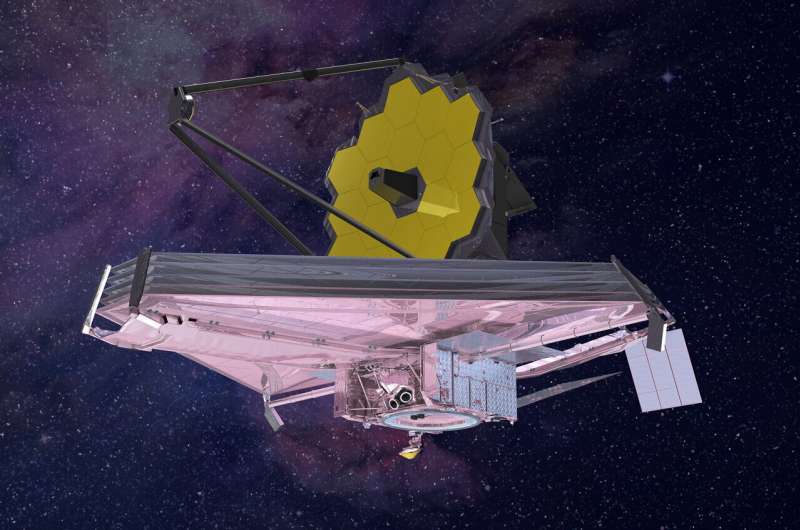
So far, 2022 may feel like a mixed bag—however, if you're an astronomer this year has already been exciting. That's because December 25, 2021 brought a highly anticipated gift, two decades in the making, with the launch of the James Webb Space Telescope (JWST).
Now the telescope is en route to its final location, called L2 (Lagrange Point 2). That's nearly 1 million miles away, so it will be a few anxious months of anticipation for astronomers and the rest of us here on the pale blue dot.
Jon Trump, associate professor in the Department of Physics, is one of those excited astronomers, and he met with UConn Today to discuss what to expect from JWST in the months ahead.
This Christmas was an extra special one for astronomers with the launch of JWST. What was it like?
I joined my collaborators for a virtual watch party for the 6:20am launch (CST). I was awake before my kids—they were a little frustrated that I didn't wake them up.
